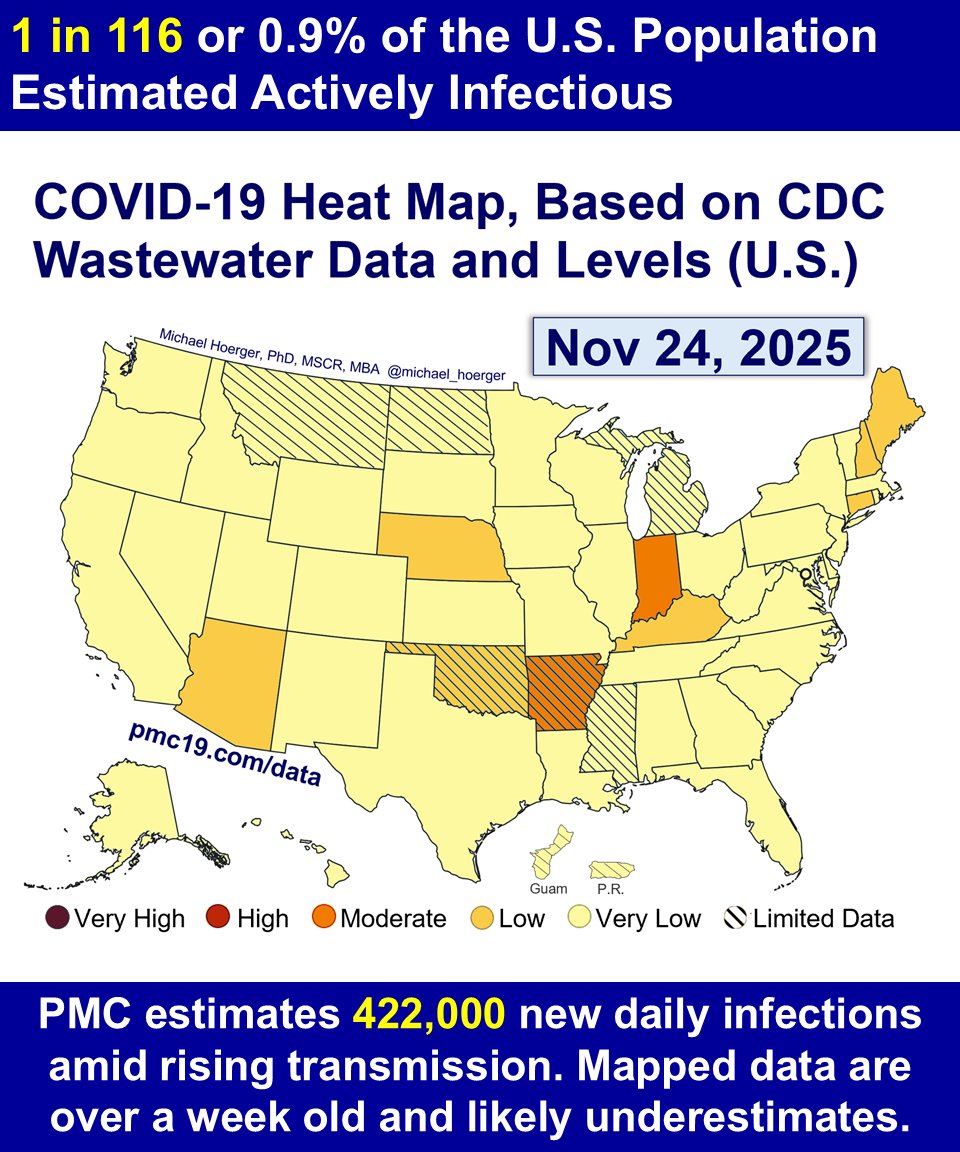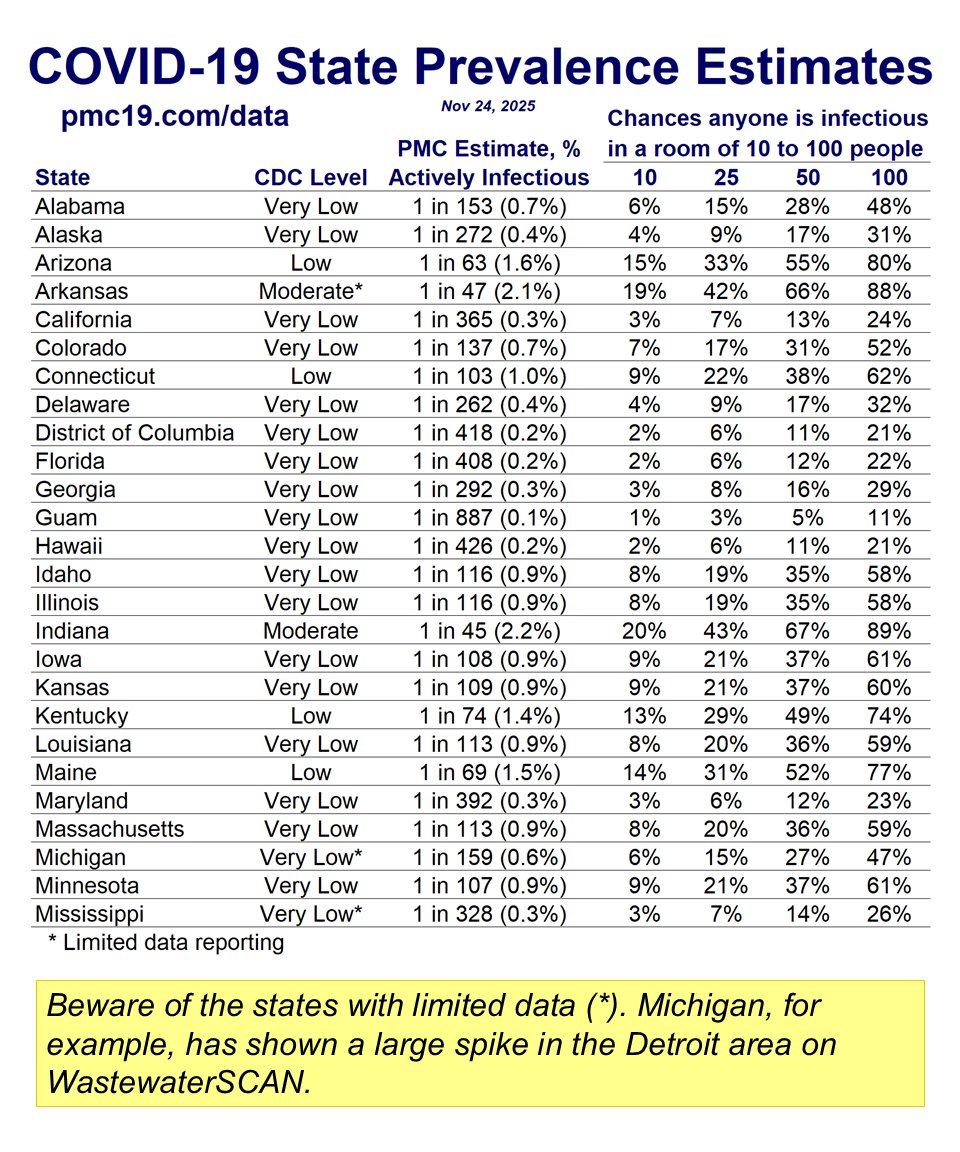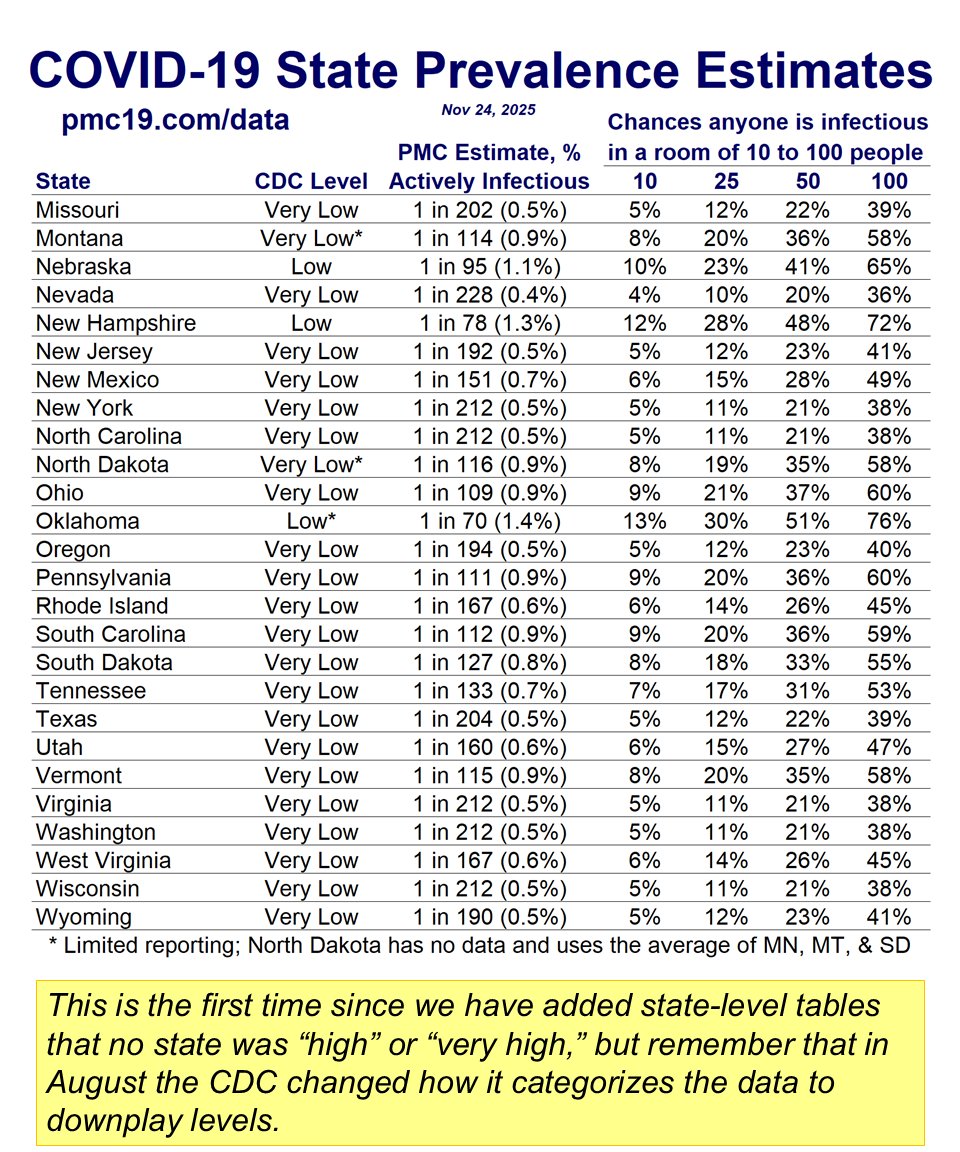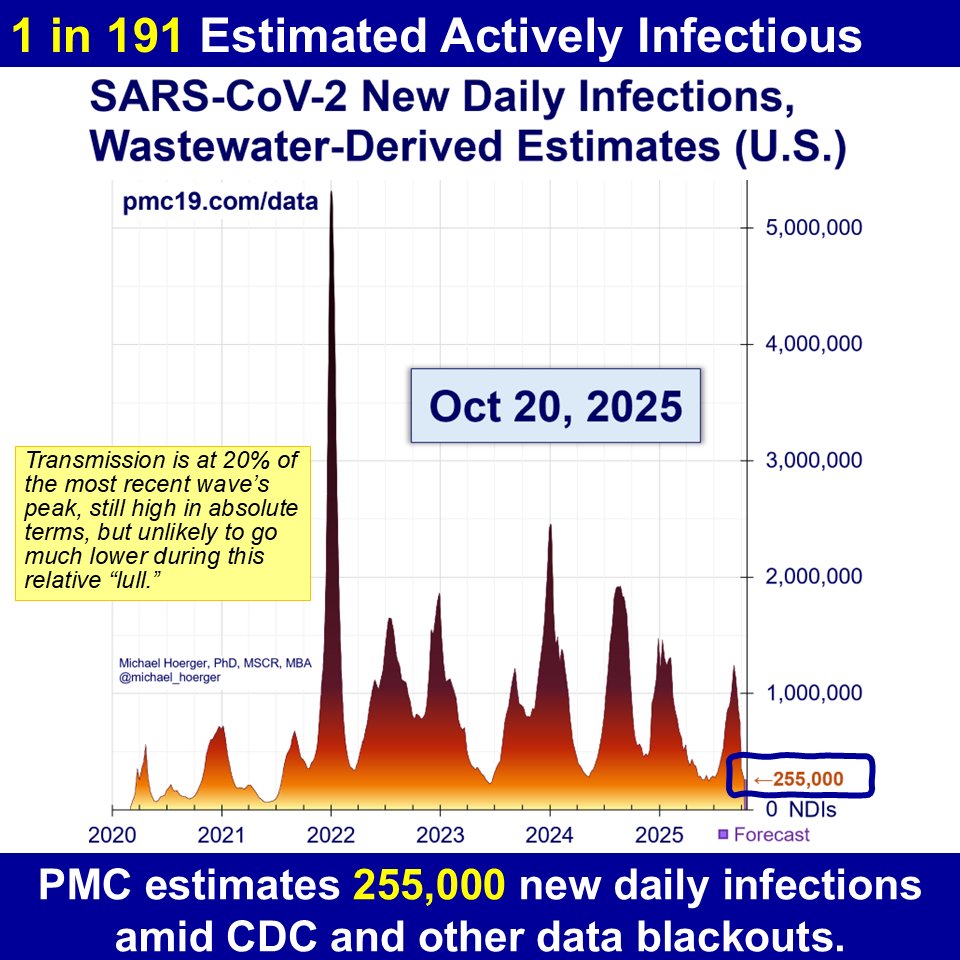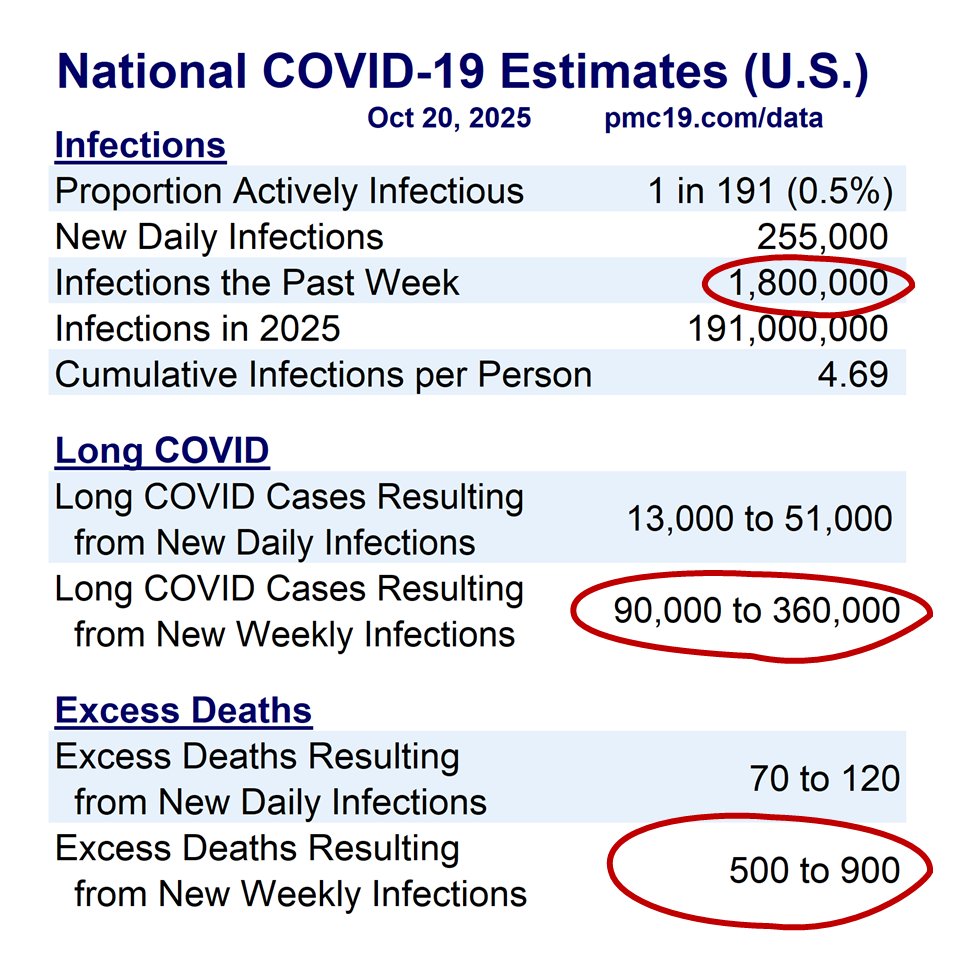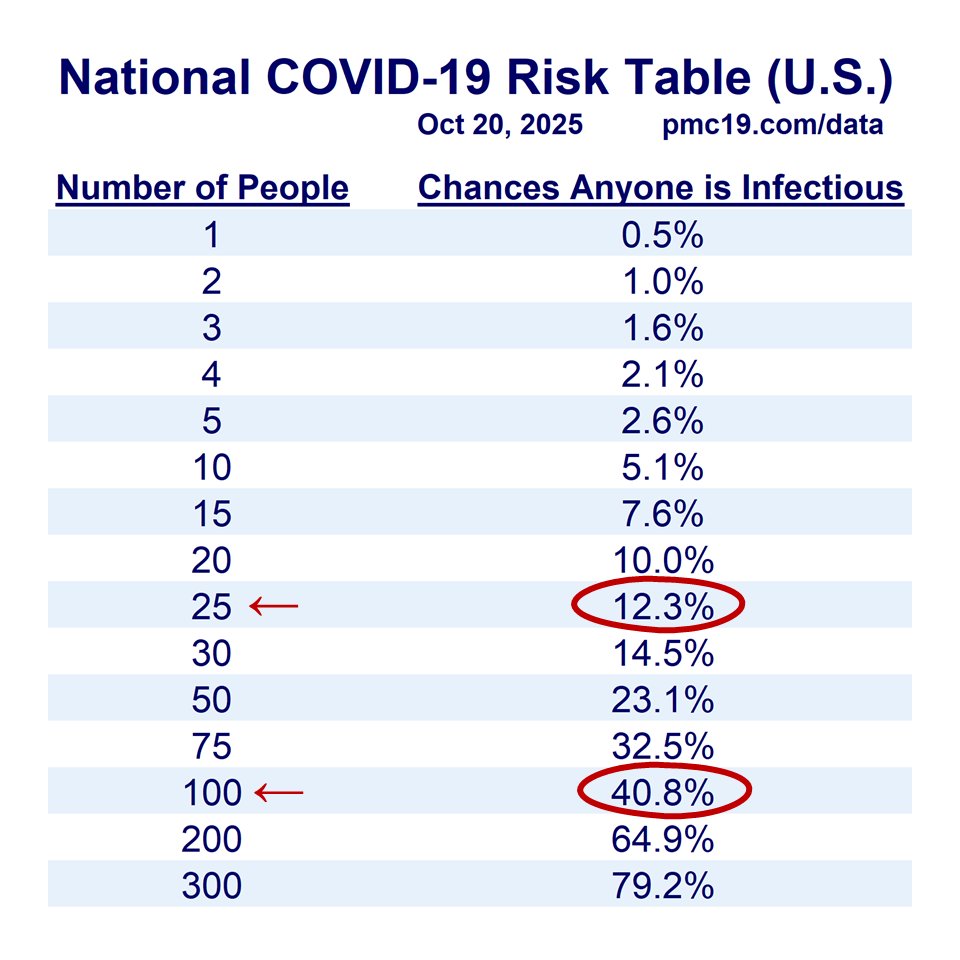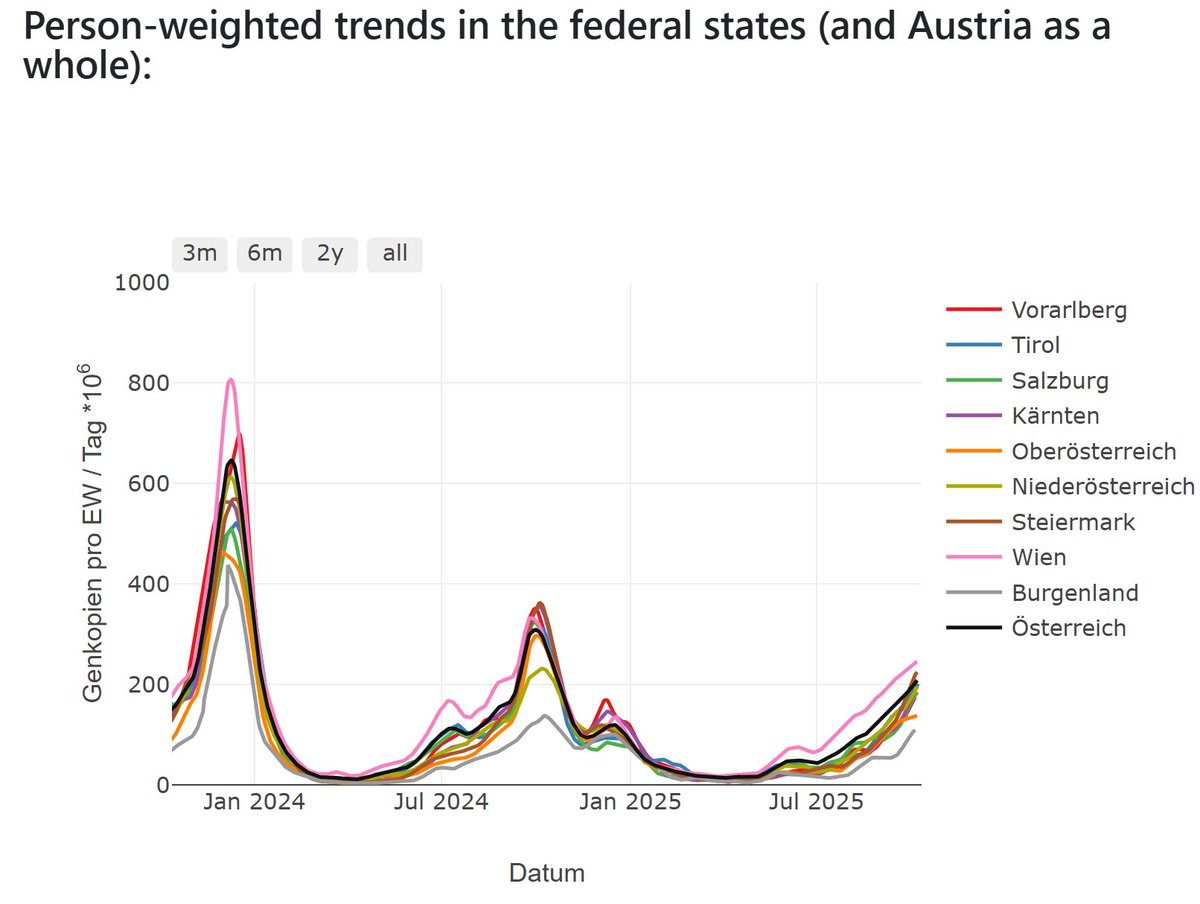PMC C0VID-19 Tracker, Sep 6, 2023
U.S. #wastewater levels are higher than during 70% of the pandemic:
🔹1.95% (1 in 51) are infectious
🔹Nearly 1 million C0VID cases per day
🔹Causing >40,000 #LongCovid cases per day
Let's look at these wildly divergent forecasts for the next 4 weeks.
Real-time Model: If you assume Biobot is reporting accurate real-time wastewater data each week, follow the red line. This says we have peaked on our late summer wave. That would be great news in terms of less morbidity and mortality. The problem is that real-time reports have been prone to error lately, more often than not underestimating wastewater levels, and then corrected later.
Alt Model 1 (Turtle): The turtle model moves slow, like a turtle. It assumes the most recent week's data from Biobot are useless and ignores them. By ignoring the most recent data, it will be slow to detect a quick change in transmission, like a peak. It basically expects "more of the same" for a little longer. See green line.
Alt Model 2 (Cheetah): The cheetah model moves fast, like a cheetah. It assumes that if last week's Biobot wastewater data underreported levels by X% that this week's current real-time data are also underreporting by that same percent. Last week's real-time data were corrected upward by 15%, which makes a huge difference in forecasting whether we're leveling off or on a steep incline. The cheetah model has us getting up to 1.4 million cases/day, so this is a good model for a worst-case scenario. See yellow line.
Composite Model: This is the average of the three models. It's what we use in the red box for estimating cases 4 weeks from now. It's a good estimate if trying to cite a point estimate to coworkers (e.g., "The U.S. will see about 1 million new cases/day the next several weeks). However, from a forecasting perspective, it's less useful because the underlying models are so divergent. See black line.
Big-Picture Framing
The current state of the pandemic is extremely bad. Expect approximately 1 million new U.S. cases per day the next several weeks. Less if we're lucky, and more if we're not. As a psychologist, I would characterize denial about the current C0VID wave to peak in the next couple weeks. Most people believe "the pandemic is over" and we're "after C0VID." Expect further gaslighting for now.
#MaskUp #VaxUp #Ventilate #HEPA #CorsiRosenthalBox #remotework
1/

U.S. #wastewater levels are higher than during 70% of the pandemic:
🔹1.95% (1 in 51) are infectious
🔹Nearly 1 million C0VID cases per day
🔹Causing >40,000 #LongCovid cases per day
Let's look at these wildly divergent forecasts for the next 4 weeks.
Real-time Model: If you assume Biobot is reporting accurate real-time wastewater data each week, follow the red line. This says we have peaked on our late summer wave. That would be great news in terms of less morbidity and mortality. The problem is that real-time reports have been prone to error lately, more often than not underestimating wastewater levels, and then corrected later.
Alt Model 1 (Turtle): The turtle model moves slow, like a turtle. It assumes the most recent week's data from Biobot are useless and ignores them. By ignoring the most recent data, it will be slow to detect a quick change in transmission, like a peak. It basically expects "more of the same" for a little longer. See green line.
Alt Model 2 (Cheetah): The cheetah model moves fast, like a cheetah. It assumes that if last week's Biobot wastewater data underreported levels by X% that this week's current real-time data are also underreporting by that same percent. Last week's real-time data were corrected upward by 15%, which makes a huge difference in forecasting whether we're leveling off or on a steep incline. The cheetah model has us getting up to 1.4 million cases/day, so this is a good model for a worst-case scenario. See yellow line.
Composite Model: This is the average of the three models. It's what we use in the red box for estimating cases 4 weeks from now. It's a good estimate if trying to cite a point estimate to coworkers (e.g., "The U.S. will see about 1 million new cases/day the next several weeks). However, from a forecasting perspective, it's less useful because the underlying models are so divergent. See black line.
Big-Picture Framing
The current state of the pandemic is extremely bad. Expect approximately 1 million new U.S. cases per day the next several weeks. Less if we're lucky, and more if we're not. As a psychologist, I would characterize denial about the current C0VID wave to peak in the next couple weeks. Most people believe "the pandemic is over" and we're "after C0VID." Expect further gaslighting for now.
#MaskUp #VaxUp #Ventilate #HEPA #CorsiRosenthalBox #remotework
1/

Let's zoom out from the 6-month view to the full pandemic.
Given current levels and forecasts, we're in a wave of transmission similar to the winter of 2020-21 or Delta. 🔥🔥
178 million infections & >8 million #LongCovid cases in 2023 thus far.
2/
Given current levels and forecasts, we're in a wave of transmission similar to the winter of 2020-21 or Delta. 🔥🔥
178 million infections & >8 million #LongCovid cases in 2023 thus far.
2/

With about 2% of the U.S. population actively infectious with C0VID, school and in-person work remain extremely risky.
Offer remote activities. #MaskUp. #VaxUp again when allowed. Read up on and improve indoor air quality. Avoid indoor dining. #RapidTest frequently.
3/
Offer remote activities. #MaskUp. #VaxUp again when allowed. Read up on and improve indoor air quality. Avoid indoor dining. #RapidTest frequently.
3/

Here's the full PMC C0VID-19 Dashboard for Sep 6, 2023.
Please share here and across other platforms if you found any of the above Tweets helpful. I'd love to hear how you're using the data and if it's helped you with any "wins" on #pandemic safety.
Thank you 🙏
4/

Please share here and across other platforms if you found any of the above Tweets helpful. I'd love to hear how you're using the data and if it's helped you with any "wins" on #pandemic safety.
Thank you 🙏
4/

• • •
Missing some Tweet in this thread? You can try to
force a refresh


